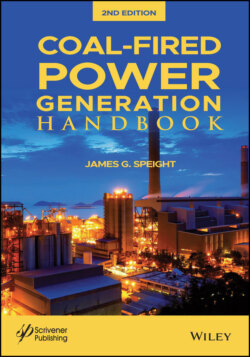Читать книгу Coal-Fired Power Generation Handbook - James Speight G., James G. Speight - Страница 75
3.6.2 Fluidized Bed Dryers
ОглавлениеFluidized bed drying is ideal for a wide range of particulate or granular solids and has found widespread usage in various industries, including those dealing with chemicals, pharmaceuticals and bio-chemicals, food and dairy products, and polymers. This is mainly due to high temperatures and high rates of mass transfer as a result of vigorous gas-solid mixing. Fluidized bed dryers can compete successfully with more conventional dryer types (e.g., rotary, tunnel, conveyor) in the drying of powders, granules, agglomerates, and pellets, with particles averaging between 50 to 5000 microns. Both heat sensitive and non-heat sensitive products can be dried using one or more of the variations of fluidized bed dryers (Osman et al., 2011).
Each design has strengths and weaknesses and implementation is highly dependent on feed and product requirements. Other advantages include smaller footprint, relatively lower capital and maintenance cost, and ease of control. Among the major issues in fluidized bed drying are (i) high power consumption, (ii) increased gas handling requirements, (iii) tendency to cause product attrition, and (iv) low flexibility in terms of feed type (size and shape) that can be handled.
The performance of fluidized beds, usually characterized by the quality of fluidization, depends on the size and shape of the feed particles, which is apparent in coal drying. To facilitate fluidization of the bed, the most straightforward way is to grind and sieve raw coal before feeding into the drying vessel. Fluidization quality can also be improved by employing mechanical vibrations, agitation, or use pulsating flow of fluidizing gas (Osman et al., 2011).
